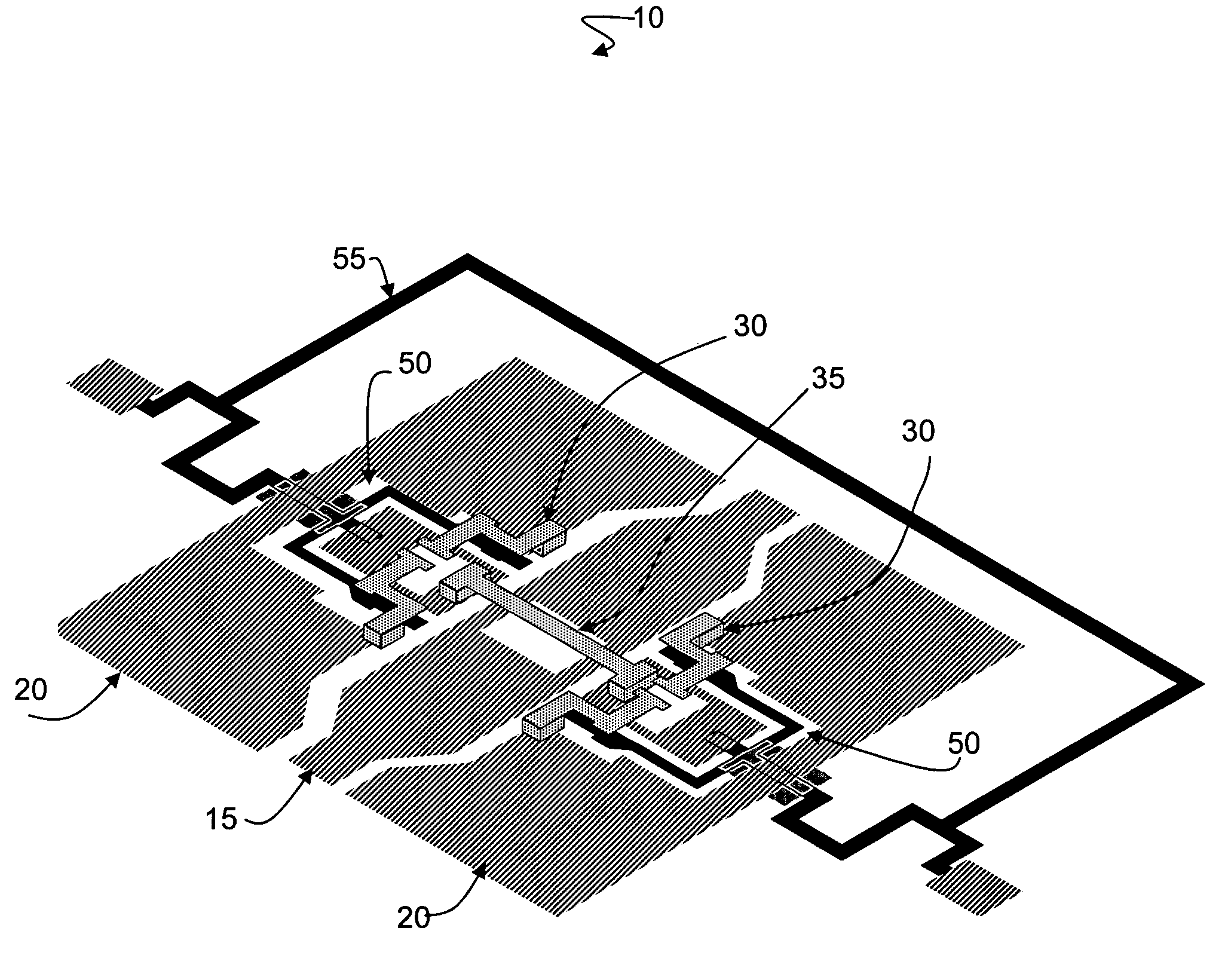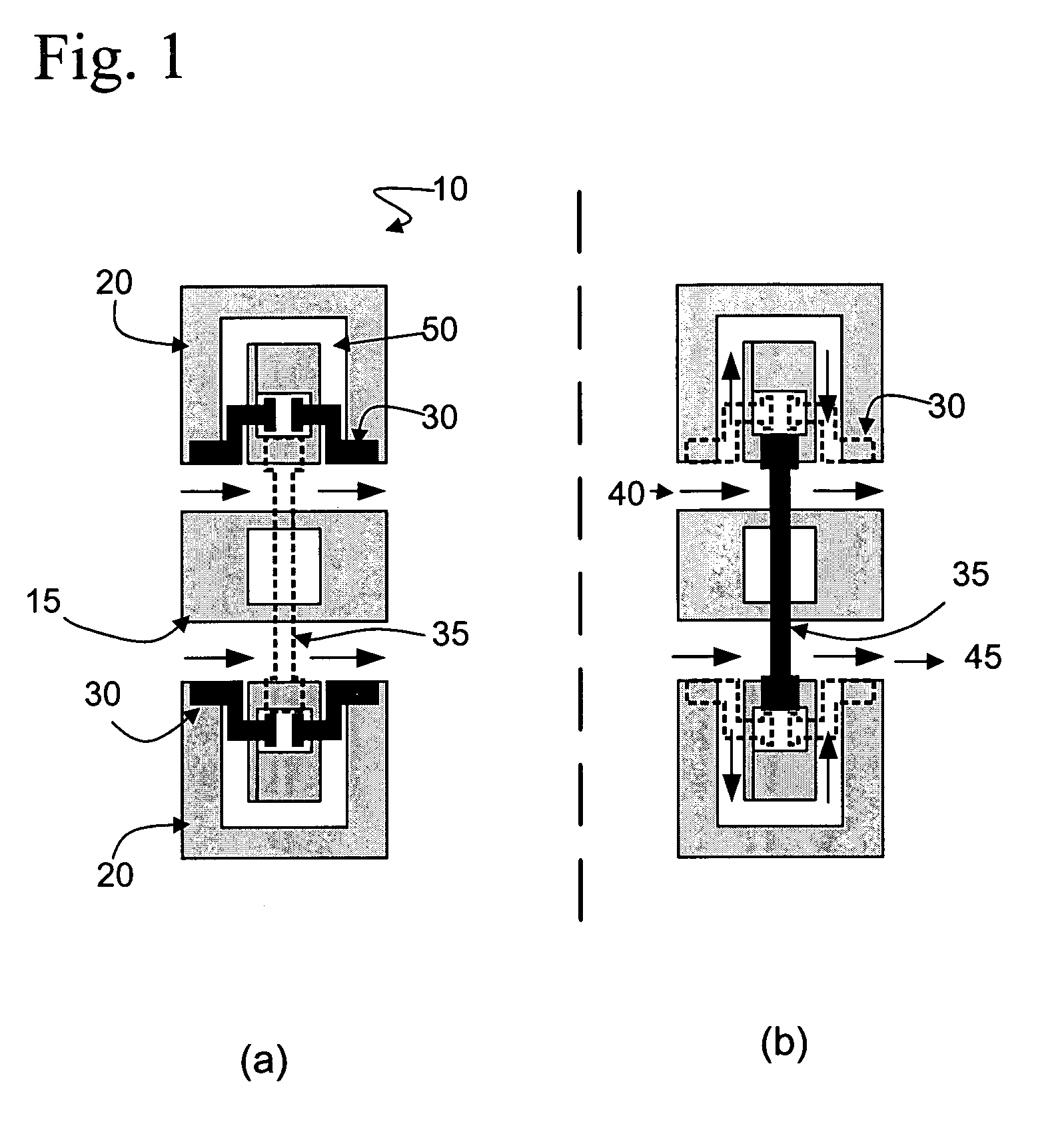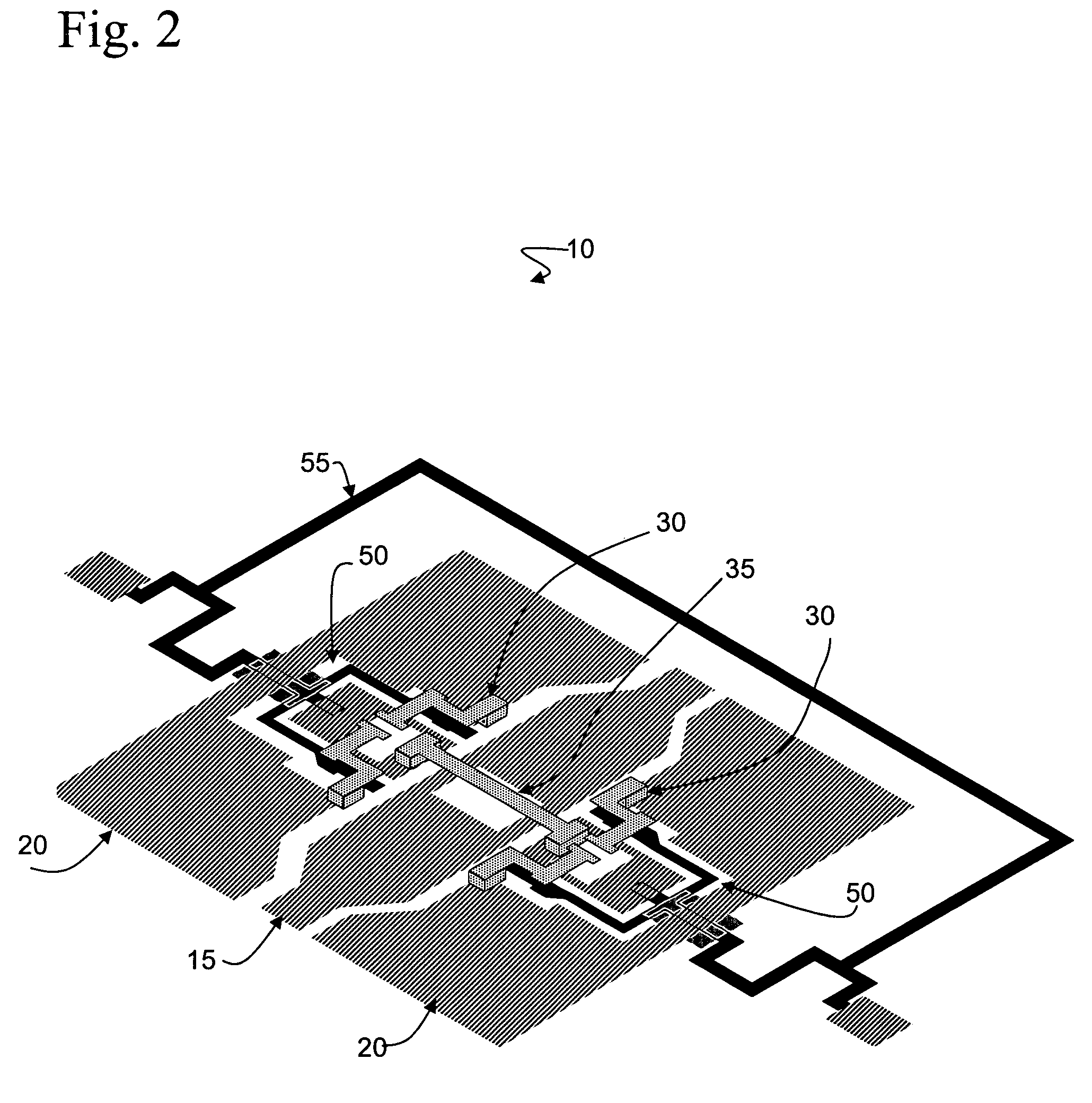Microelectromechanical slow-wave phase shifter device and method
a phase shifter and microelectromechanical technology, applied in waveguides, delay lines, electrical equipment, etc., can solve the problems of physical limitation of the performance achievable with rf mems ttd devices, large phased array radar systems can cost millions of dollars, and restrict the achievable per unit length
- Summary
- Abstract
- Description
- Claims
- Application Information
AI Technical Summary
Benefits of technology
Problems solved by technology
Method used
Image
Examples
Embodiment Construction
[0036]In the following detailed description of the preferred embodiments, reference is made to the accompanying drawings, which form a part hereof, and within which are shown by way of illustration specific embodiments by which the invention may be practiced. It is to be understood that other embodiments may be utilized and structural changes may be made without departing from the scope of the invention.
[0037]The differential phase shift between the up- and down-states of a DMTL with capacitive-loading is accompanied by a change in the effective characteristic impedance in each state. Using the quasi-TEM assumption, the relationship between phase shift for a DMTL of length L and characteristic impedance is derived as shown below in Equation 1. Assuming a reference impedance of 50Ω, Zup and Zdn need to be approximately 55Ω and 45.4Ω, respectively, in order to maintain RL greater than 20 dB. The resulting Δφ per unit length is 17.8° / mm at 50 GHz. Achieving this small variation in the ...
PUM
| Property | Measurement | Unit |
|---|---|---|
| impedance | aaaaa | aaaaa |
| impedance | aaaaa | aaaaa |
| impedance | aaaaa | aaaaa |
Abstract
Description
Claims
Application Information
 Login to View More
Login to View More - R&D
- Intellectual Property
- Life Sciences
- Materials
- Tech Scout
- Unparalleled Data Quality
- Higher Quality Content
- 60% Fewer Hallucinations
Browse by: Latest US Patents, China's latest patents, Technical Efficacy Thesaurus, Application Domain, Technology Topic, Popular Technical Reports.
© 2025 PatSnap. All rights reserved.Legal|Privacy policy|Modern Slavery Act Transparency Statement|Sitemap|About US| Contact US: help@patsnap.com



